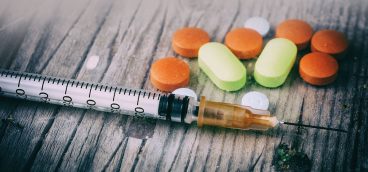Pittsburgh’s Top Stories of 2016

Number five: Pittsburgh’s 200th Anniversary. Pittsburgh is getting younger. You read about it, hear about it and see it anytime you’re out on the “tahn.” Even the demographic data backs it up. If you still don’t believe it, consider this: This year, just eight years after the Pittsburgh 250 celebration, the City of Pittsburgh celebrated its 200th Anniversary—proof positive that everything about this place is getting dramatically younger every year, right? Well, not quite. This year’s festivities were for the bicentennial of the incorporation of Pittsburgh as a city. A century ago, Pittsburgh observed its 100th birthday in monumental fashion with the construction of the city-county building. No such brick-and-mortar masterpieces for the bicentennial. Instead, the city took a page from Chairman Mao and let 100 flowers bloom with smaller events across the city.
#4 Weakness in the Pittsburgh economy
Since the great recession, stories heralded Pittsburgh’s new diversified economy and vitality. What we didn’t know until this year was just what a big role the Marcellus shale played in Pittsburgh’s vaunted turn-around. That became clear when natural gas and oil prices cratered a year ago and the local Marcellus shale industry froze, sending ripple effects throughout the region. In the first quarter of 2016, average weekly wages fell 5.8% in the region. Washington County, the hub of the Marcellus, saw weekly wages fall 12.6%—the second largest drop in America. Allegheny County saw the 7th largest decline. Job growth disappeared and unemployment rose to 6%, but with natural gas prices rising again, we can hope for a better 2017.
#3 The war on heroin
The year started with U.S. Attorney David Hickton holding a press conference, saying the region needed to attack the heroin epidemic more aggressively. Every overdose should be investigated. Federal and local agencies needed to pool their resources and work together. Police and prosecutors needed to step up the efforts to break up heroin-dealing rings. And everyone needed to move faster. Hickton emerged as a galvanizing leader, and prosecutions have followed with a flourish. So unfortunately have deaths, to the point that heroin overdoses have become so common that no one in any walk of life is immune from knowing of an addict or a victim of overdose. And those opioid overdoses have played a big role in the first decline of life expectancy in the U.S. since 1993.
#2 The Penguins win the Stanley Cup
In the middle of December last year, the Pen’s fourth Stanley Cup seemed to be a long way away. The team was in 5th place, and their poor play had resulted in coach Mike Johnston losing his job. The players knew a change was at hand as the reins were turned over to Mike Sullivan, a motivator who had been promoted from Wilkes-Barre/Scranton. The change proved catalytic, and even though they lost their first four games under Sullivan, a new spirit had arrived. Sullivan connected with the players, a highly-paid but under-performing group, and they began to come around. In the playoffs, the Penguins beat the New York Rangers in five games. The Washington Capitals in six, and the San Jose Sharks in seven in the finals. Now the Penguins—following the Steelers’ footsteps—just need one for the thumb.
#1 The election of Donald Trump
When the year began, 17 Republican hopefuls sought the party nomination—the largest field in American political history. By the Ides of March, only Ted Cruz, John Kasich and Trump remained. By the end of May, Trump won the nomination. His brash and unorthodox primary campaign had thrilled some and horrified others, but it was nothing compared to the no-holds- barred battle between Trump and Hillary Clinton. Scandal surrounded both candidates and polls showed voters choosing the candidate they disliked the least. The candidates blamed the media, the Russians, WikiLeaks and a basket of deplorables. The experts expected a Clinton victory, and, if Trump somehow won, a stock market meltdown. They were wrong on both counts: Trump won Pennsylvania en route to the White House and a nearly 10 percent “Trump Rally” buoyed Wall Street.




